Buying the right camera equipment can be an overwhelming experience, especially when you’re trying to find that perfect lens that won’t break the bank but will significantly elevate your shots. Enter the ‘nifty fifty’ lens, a Swiss-army knife among both budding and seasoned photographers, known for its incredible creative value and versatile performance. Whether I’m capturing the can-did moments of street life, the intimate details of everyday objects around the house, or even during studio sessions, my nifty fifty is often my go-to choice. It’s the one lens I consistently recommend to my students, especially those who are just starting out, or who can’t afford a fast Pro lens and would like to transform their photography. Obviously, creativity relies on visual intelligence and creativity, but lenses – even more than cameras – are necessary to turn your artistic vision into tangible artwork.
What does Nifty Fifty mean?
What does Nifty Fifty imply? The nifty fifty is a lens that packs a punch without leaving a dent in your wallet. The “nifty” part refers to the lens’s huge f/1.8 lens opening, called aperture (in some cases, f/2), which is quite a large aperture! The “fifty” part refers to the 50mm focal length. Let’s discuss why these are important:50mm Prime?
50mm Prime? The nifty fifty is a “prime” lens, which means it offers a fixed focal length of 50mm and cannot zoom, forcing photographers to physically move to compose their shots—a practice that encourages more thoughtful compositions and engaging your subjects more actively.
Another important aspect is that a 50mm focal length projects the same perspective as the human eye! In other words, 50mm portrays the world in a very similar way, we see it. When you peer through the camera’s viewfinder, the scene appears almost as it would naturally to your eye. In other words, it is excellent for capturing images that feel authentic and true to life, with minimal distortion. Distortion in photography refers to the way lenses can sometimes bend or misrepresent the edges of the frame, making straight lines appear curved or altering the proportions of subjects. The 50mm lens is known for having very little distortion, which helps in creating more natural-looking images.
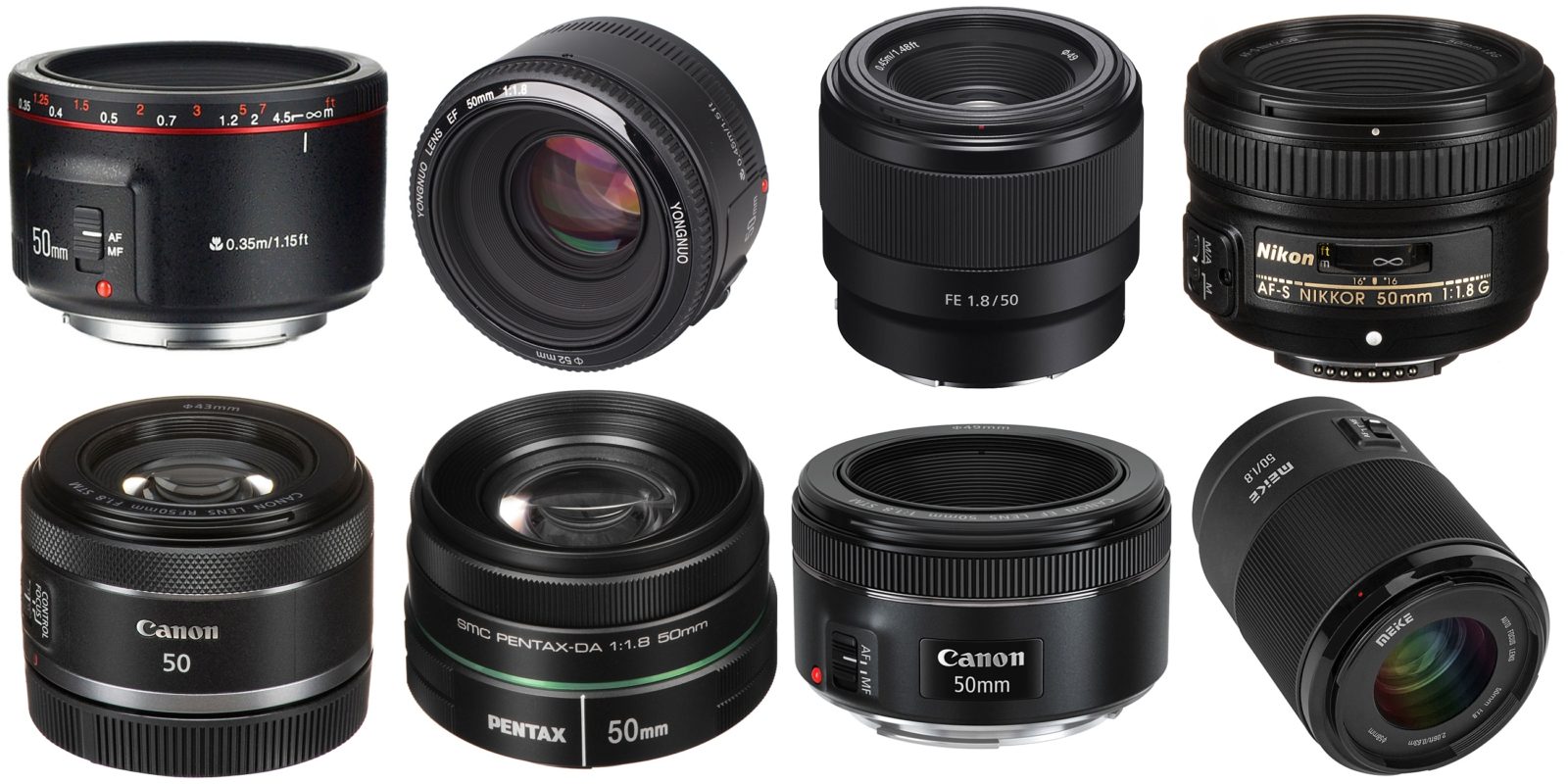
A World of Options: Nifty Fifties Galore
While all the major camera brands and some third-party manufacturers offer nifty fifties, these lenses are a staple for almost every serious photography student. Most photographers starting out will invest in one! However, it's important to remember that not all 50mm f/1.8 lenses are created equal. The price is a significant indicator; the more expensive models often belong to the professional category and differentiate themselves from standard nifty fifties. Investing time to find the right one, including third-party options, can greatly enhance your photography toolkit. We will delve into this topic later in the article.Difference between 50mm on a Full Frame and an APS-C Camera
Just a point of note, for those using full-frame cameras, a 50mm lens offers a true-to-life perspective. However, photographers with APS-C cameras, which have a smaller sensor, will find a 35mm lens provides a similar experience due to the smaller sensor. This means that on APS-C cameras, a 35mm lens will closely mimic the natural perspective and field of view that a 50mm lens offers on a full-frame camera. Therefore, a 50mm lens on an APS-C camera will be like around an 80mm lens on a full frame.
Large Aperture
The term “large apertures” is what photographers refer to as a “fast lens,” and our nifty fifty lens with a maximum f/1.8 aperture is a perfect example of this. A fast lens is so called because its large aperture or lens opening allows for quicker shutter speeds, which is crucial in low-light conditions.
The f/1.8 aperture of the lens means its opening is significantly larger than those found on typical kit lenses, allowing it to gather more light. This is invaluable for indoor, nighttime, or any photography settings where light is limited. By capturing more light, the lens enables you to use faster shutter speeds, thereby reducing the chances of blur from camera shake or motion, and making it easier to capture crisp, clear images even in dim conditions.
Moreover, the wide aperture provides another artistic advantage: the ability to create a shallow depth of field. This effect brings the main subject into sharp focus while blurring the background, an aesthetic known as bokeh. Bokeh, derived from a Japanese word meaning “blur” or “haze,” refers to the quality of the out-of-focus areas in a photograph.
This effect is especially pronounced when shooting subjects up close with a wide aperture; the background becomes a soft, dreamlike blur that emphasises the subject over its surroundings. This professional-looking bokeh effect is something you won’t achieve with the smaller apertures of kit lenses. It’s important to note that bokeh is most effectively achieved in situations where there is a significant distance between the subject and the background. In contrast, photographing a distant scene, such as a landscape, with a wide aperture won’t produce a noticeable out-of-focus background because the depth of field extends far into the distance.
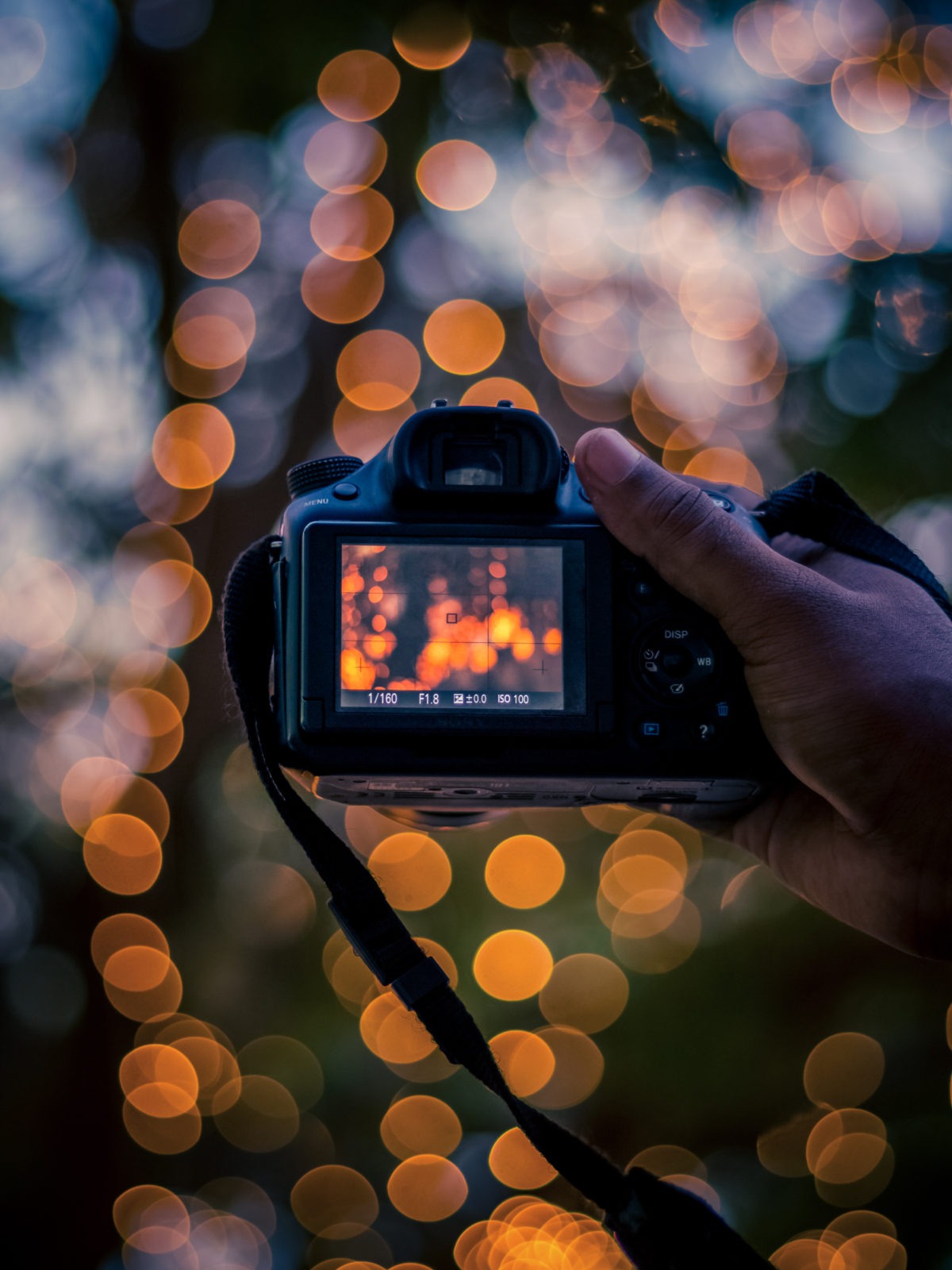
Bokeh!
Some photographers call photos with great bokeh "bokehlicious". Setting your aperture to f/1.8, focusing on a nearby subject, and shooting into bright, colourful lights can be a revelation. We all adore the bokeh effect and how those out-of-focus lights in the background transform into colour-ful, circular shapes. This simple technique can instantly elevate your work and give you a more pro-fessional edge!
City Lights Through The Rain
A nifty fifty lens turns a rainy evening into a canvas of soft, colourful circles, perfectly illustrating the lens’s ability to capture striking bokeh in a simple composition.Tip: Four Easy Steps to Achieve an Out-of-Focus Background
If you’re keen to achieve sharp focus on your main subject while blurring the background for maximum bokeh with your nifty fifty or any wide-aperture lens, follow these steps:
- Position your subject further from the background. The greater the distance between your subject and the backdrop, the easier it is to achieve that sought-after blurred background effect, making your subject stand out more prominently.
- Open up your aperture by setting it to the maximum size, e.g., f/1.8. By opening up your aperture to its widest setting you allow more light to enter the lens, which not only helps in low-light conditions but also significantly reduces the depth of field. This narrower focus range isolates your subject sharply against a softly blurred background.
- Consider using a long telephoto lens. However, as this article focuses on nifty fifties, remember that with a 50mm prime lens, zooming isn’t possible, and you’re confined to the 50mm focal length. Yet, as demonstrated by the images showcased in this article, a nifty fifty is more than capable of beautifully blurring the background.
- Get as close to your subject as possible. The closer you are, the more the background will blur. This technique is especially useful when you want to make the subject the undeniable focal point of the image, enveloping them in a beautifully blurred backdrop that accentuates their presence in the frame.
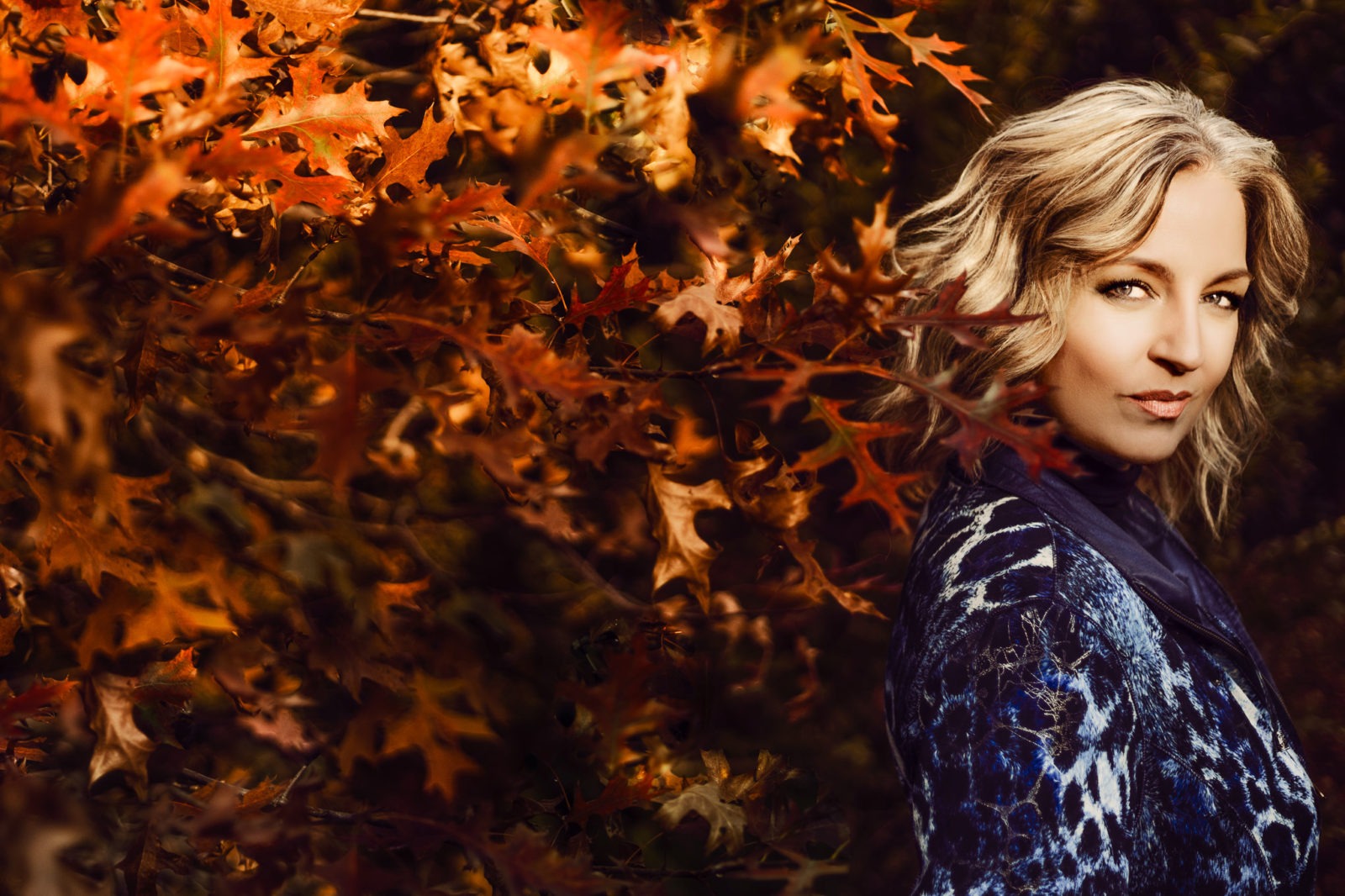
Autumn Portrait with a Shallow Focus
The ability to blur the background transforms potentially busy and obtrusive scenes, like this one with autumn-coloured foliage behind my gorgeous wife dressed in a complementary blue jacket, into dreamlike canvases.The advantage of working with a fixed focal length
As already mentioned earlier, the fixed focal length of the 50mm lens encourages photographers to think more creatively about composition. Since you can’t zoom with the lens, you’re compelled to move around and explore different angles and perspectives, leading to a more intimate understanding of your subject and environment. This constraint can be surprisingly liberating, pushing photographers to develop their skills and vision. In my practical classes, I often require beginners to use a 50mm lens or set their zoom lenses to 50mm, to practice this restricted, or rather “disciplined’’ approach to photography.
This is where your Nifty Fifty Shines!
We already mentioned that these fast 50mm prime lenses are perfect for photographers seeking versatility, quality, and value. Its applications span various photography genres, making it a must-have in your camera bag. Let’s look at in which areas it wil shine!Everyday Photography:
The 50mm lens is perfect for capturing those spontaneous, everyday moments that make life beautiful. Its ability to creatively blur the background while keeping the subject in sharp focus allows photographers to isolate and emphasize the main subject, transforming ordinary scenes into captivating images. This selective focus effect can make even the most mundane subjects stand out, effectively turning every snapshot into a piece of art. The lens encourages photographers to explore their surroundings with a creative eye, finding beauty in the simplicity of everyday life.
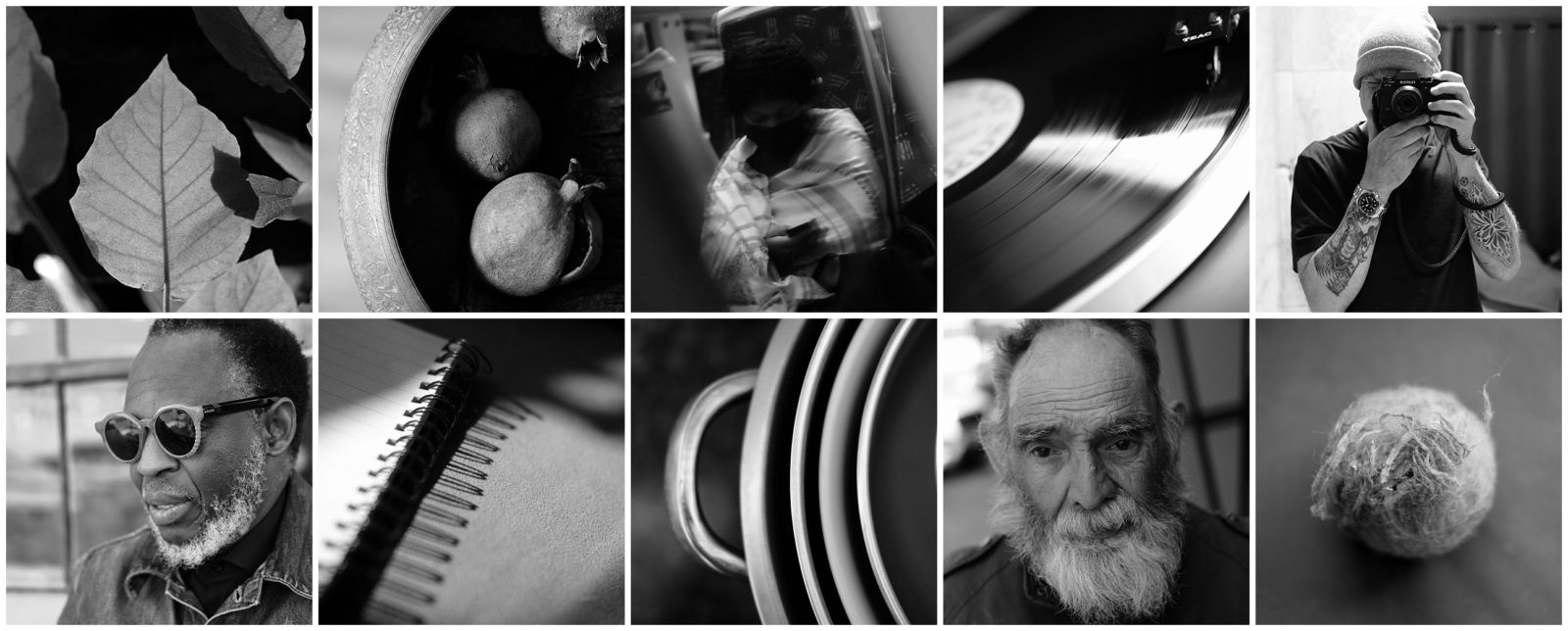
Everyday Life by Cliff Shain
This collage features a series of random pictures by my friend Cliff Shain, all taken with the Fuji 35mm f/2 lens. Although not a classic 'nifty fifty,' this lens is a bit more expensive, but on an APS-C camera, it provides a similar field of view as a 50mm lens on a full-frame camera. The compact size of these lenses, paired with a small Fujifilm camera, makes it incredibly portable and unobtrusive, perfect for Cliff to carry everywhere. These images, all shot at f/2, showcase daily life through Cliff's eyes with thoughtful compositions and shallow depth of field.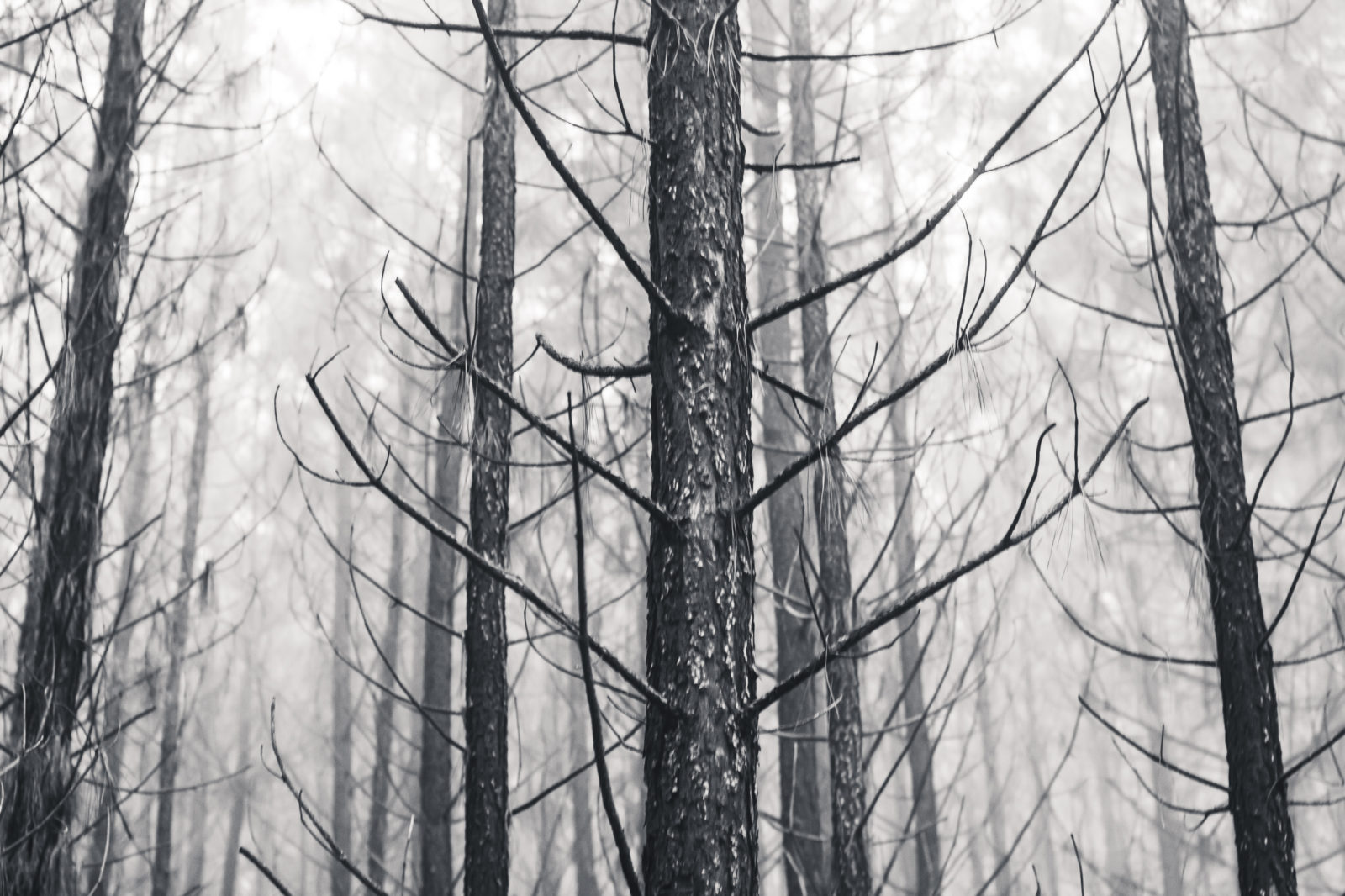
The Art of Blur
With a shallow depth of field and a bit of camera movement, even regular pine trees can take on an artistic edge. Here, photographed at f/1.8, the simple scene becomes a blur of lines and motion, turning the trees into something more interesting than just a standard shot.Portrait Photography:
Nifty Fifties really shines as affordable yet high-quality portrait lenses. Unlike wide-angle lenses, which can distort facial features, or long telephoto lenses, which can overly compress them, the nifty fifty offers a natural, pleasing perspective. It’s particularly effective for ¾ and full-length portraits. When used on an APS-C camera, which provides an equivalent focal length of around 80mm, it becomes even more ideal for head and shoulder shots, delivering beautifully blurred backgrounds and sharp subjects.
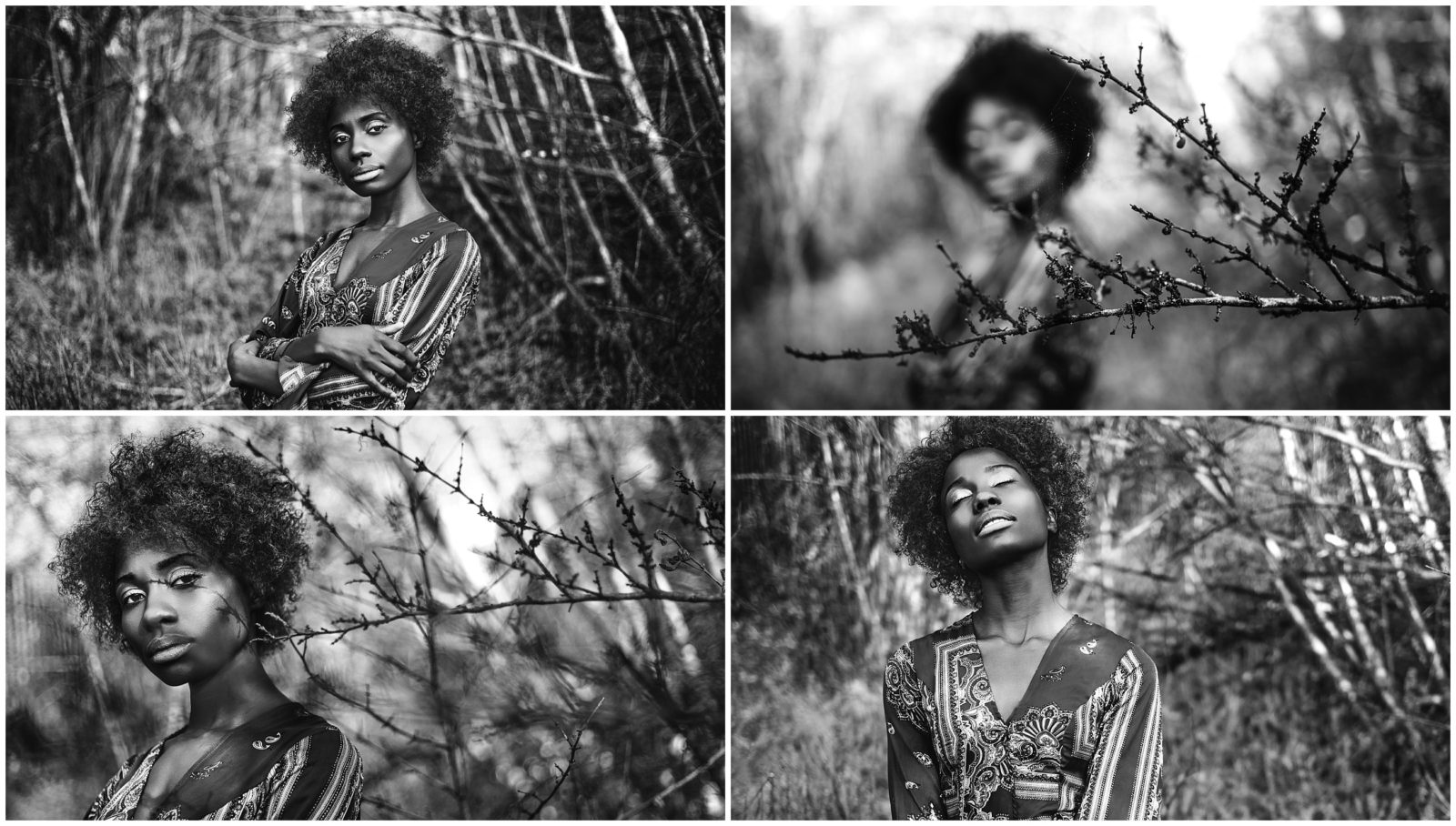
Sharp Portraits and Blurred Backgrounds!
These portraits of Angel Moyo were taken with a Nifty Fifty at f/1.8 during one of my basic portrait workshops, demonstrating how a fairly unphotogenic background can be blurred to create a mys-terious setting.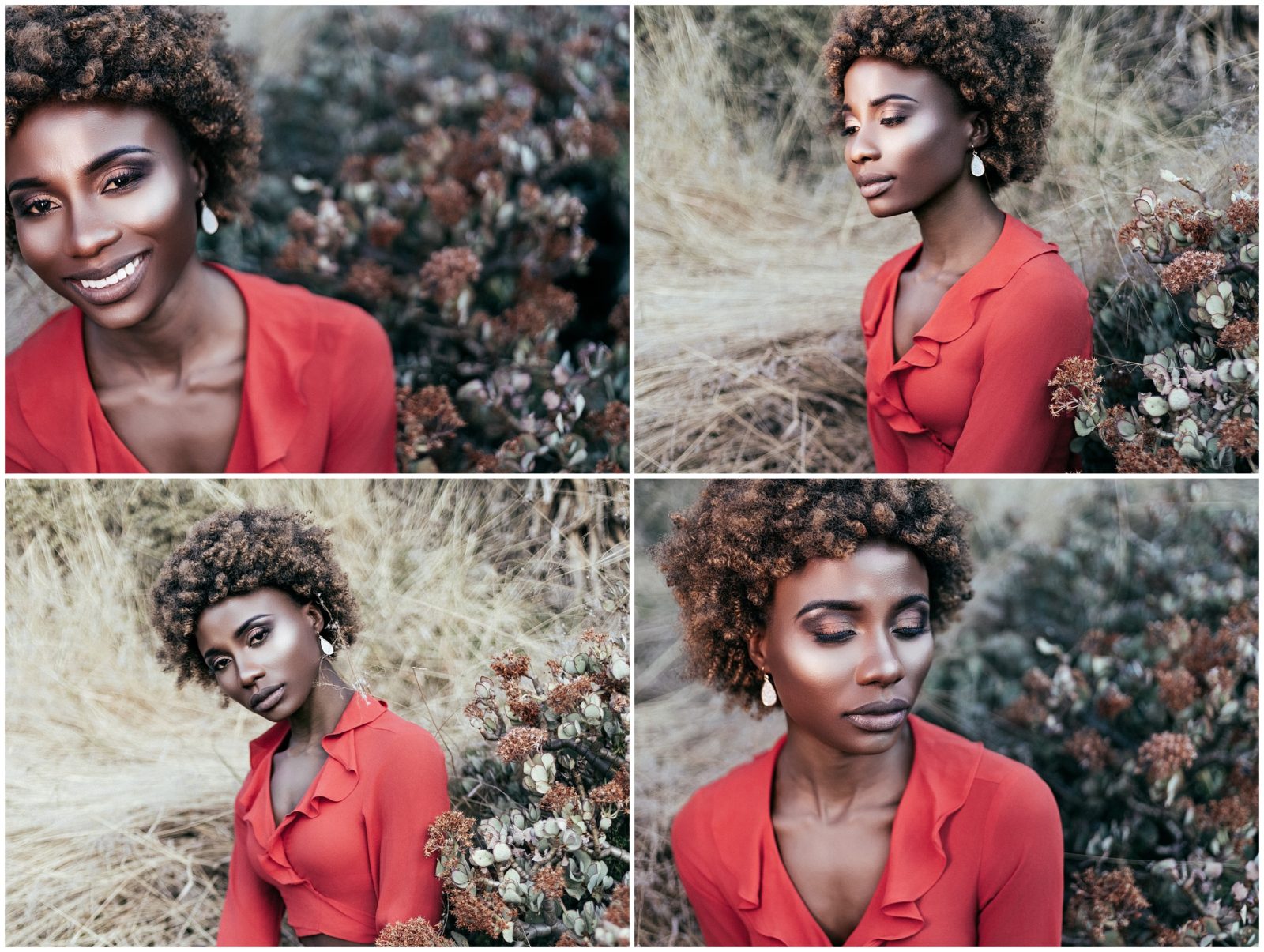
Tip: Shooting with a mirrorless camera equipped with eye-tracking ensures that the focus on the subject’s nearest eye is spot-on, despite the extremely shallow depth of field. With older cameras, like DSLRs, shooting at f/1.8 was often risky because you had to take multiple shots and precisely position your focus point on the subject’s eye to achieve a sharp image.
The following table helps you understand how well the 50mm lens performs in different portrait photography scenarios, comparing its effectiveness on full-frame cameras versus APS-C sensor cameras:
Full Frame
APS-C
Full Length and Group Shots
*****
****
3/4 Portraits
****
*****
Head and Shoulders
***
****
* This table helps you assess the 50mm lens’s performance across various portrait styles, with a comparison between full-frame and APS-C sensor cameras. The star ratings, ranging from one to five, indicate the lens’s suitability for each type of portrait, with five stars representing the best fit. Full-length portraits and group shots excel on full-frame cameras, as shown by the five-star rating, due to the wider field of view. However, 3/4 portraits receive the highest rating on APS-C cameras, benefiting from the tighter crop. For head and shoulder portraits, both camera types perform admirably, with APS-C cameras having an advantage due to the effective increase in focal length, offering a more flattering compression.
Travel and Street Photography
The compact and lightweight design of the nifty fifty makes it an ideal companion for travel and street photography. Its unobtrusive nature allows photographers to blend into their surroundings, capturing candid moments without drawing attention. While I often shoot travel and streets with a 50mm, I personally lean towards a 35mm lens for street photography due to its slightly wider field of view and ability to incorporate architectural elements. However, many photographers appreciate the 50mm for its more flattering perspective on subjects. It strikes a balance between being wide enough to capture the essence of a scene and tight enough to focus on individual subjects, making it versatile for various street photography styles.
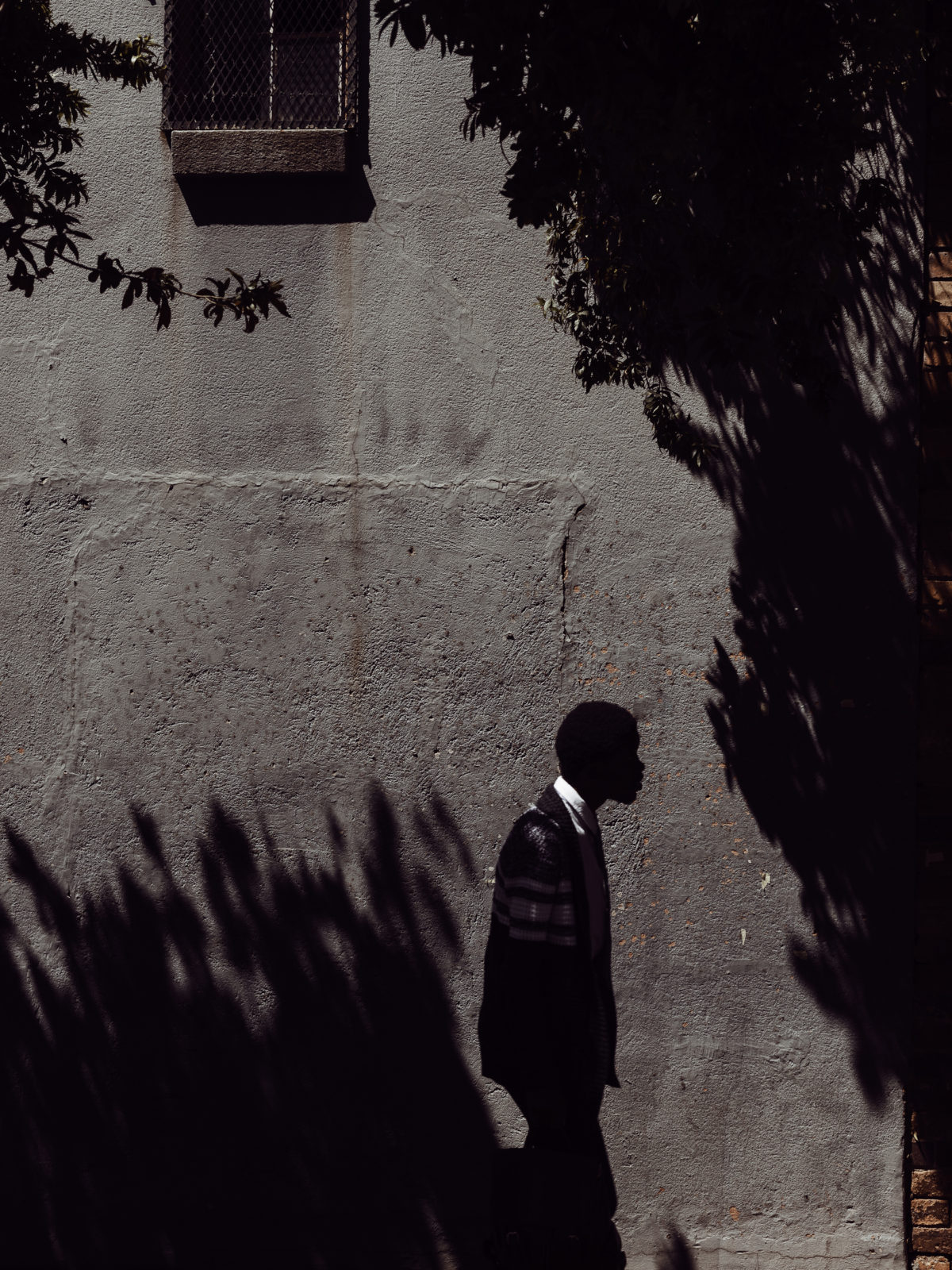
The Street Photographer's Go-To Lens!
The 50mm lens provides a view of the world much like our own eyes do, making it a favourite among street photographers. Additionally, these nifty fifties are less conspicuous than their larger professional f/1.2 and f/1.4 counterparts, drawing less attention and making them ideal for candid street photography. It's important to note that you don't need to shoot all your street shots wide open at f/1.8. Most of the time, to achieve sufficient depth of field for effective storytelling from front to back, photographers will stop down their nifty fifties to around f/5.6, where they achieve decent sharpness. This ensures that your street shots can be printed really big without losing detail.Low-Light Photography
The fast f/1.8 aperture is a boon in low-light conditions, allowing more light to hit the sensor and enabling photographers to shoot in dim environments without resorting to high ISOs or slow shutter speeds. This capability makes the lens a favourite for indoor events, night scenes, and any situation where lighting is less than ideal.
City Lights Creative Blur
Here’s a fantastic technique for capturing out-of-focus cityscapes that fade into the background, transforming city lights into softly glowing orbs. This approach simplifies urban complexity into repetitive, colourful shapes! It is also particularly effective for creating magical Christmas scenes! Here’s how to do it: For optimal image quality, use a tripod and set your camera to a low ISO, such as ISO 100. If you’re not yet comfortable shooting in Manual Mode, use Aperture Priority and open up to the maximum aperture, e.g., f/1.8. Switch to Manual Focus and adjust the focus ring until the lights in the background become completely blurry and out of focus.
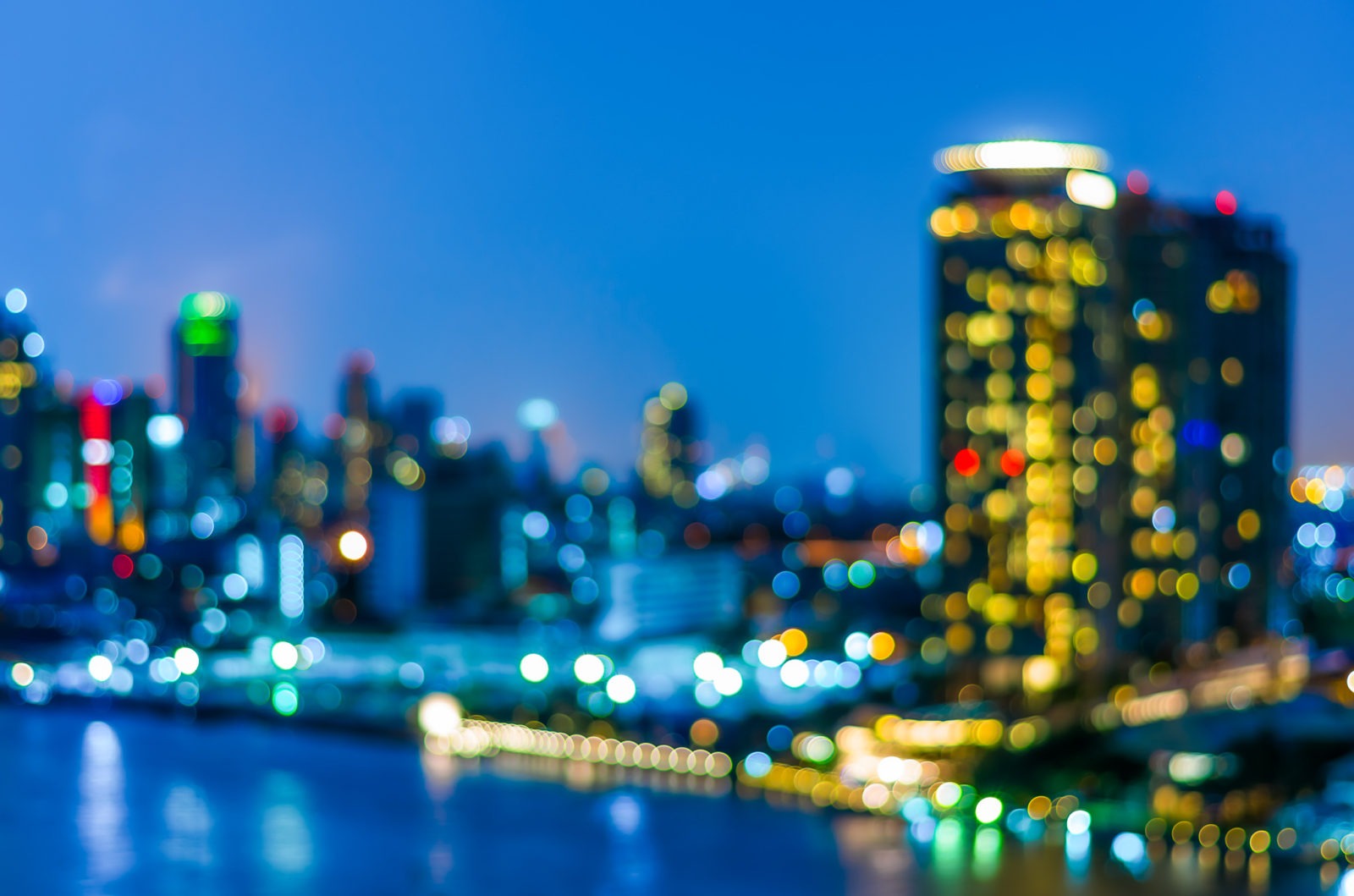
Bangkok Scene Using Creative Blur
Captured with a nifty fifty, this stock image uses creative defocusing to turn city lights into mes-merizing blurs. Perfect as backgrounds for websites, presentations, and digital art.Professional 50mm Lenses vs. Nifty Fifties:
While I do hold professional-grade lenses in high regard, especially the 50mm f/1.4 and exquisite f/1.2 models for their superior performance, outstanding image quality, rapid autofocus, and durable construction, the “nifty fifty” remains a commendable alternative for those just starting out or on a tighter budget. The nifty fifty may not match the pro lenses in all aspects but still offers impressive image quality that can compete in many photographic situations. Here’s a more detailed comparison, incorporating the nuances of both the nifty fifty and its more advanced counterparts:
Professional 50mm Lenses
Nifty Fifty Lenses
Image Quality
Expensive lenses provide better corner-to-corner sharpness and less vignetting.
The nifty fifty offers excellent central sharpness and decent overall image quality.
Bokeh Quality
Higher-end lenses produce smoother, creamier bokeh, enhancing the aesthetic appeal of out-of-focus backgrounds.
The nifty fifty still outperforms most zoom lenses in bokeh quality, providing a pleasing background blur that significantly enhances portraits.
Build Quality and Features
Pro lenses often feature metal construction and weather sealing for enhanced durability. Some even come with built-in image stabilizers making them more versatile in varied shooting conditions.
Known as “fantastic plastic,” the nifty fifty is lightweight and portable due to its plastic build, though less durable than pro lenses and lacking image stabilization.
* Tip: Choose a camera with in-body stabilization (IBIS) to pair effectively with a nifty fifty, avoiding the higher cost of pro-grade lenses.
Autofocus
The Pro lenses boast quicker, and quieter autofocus systems, beneficial for fast-paced shooting environments and video work.
The nifty fifty’s autofocus may be slower and sometimes noisy but is still adequate for a wide range of photography needs.
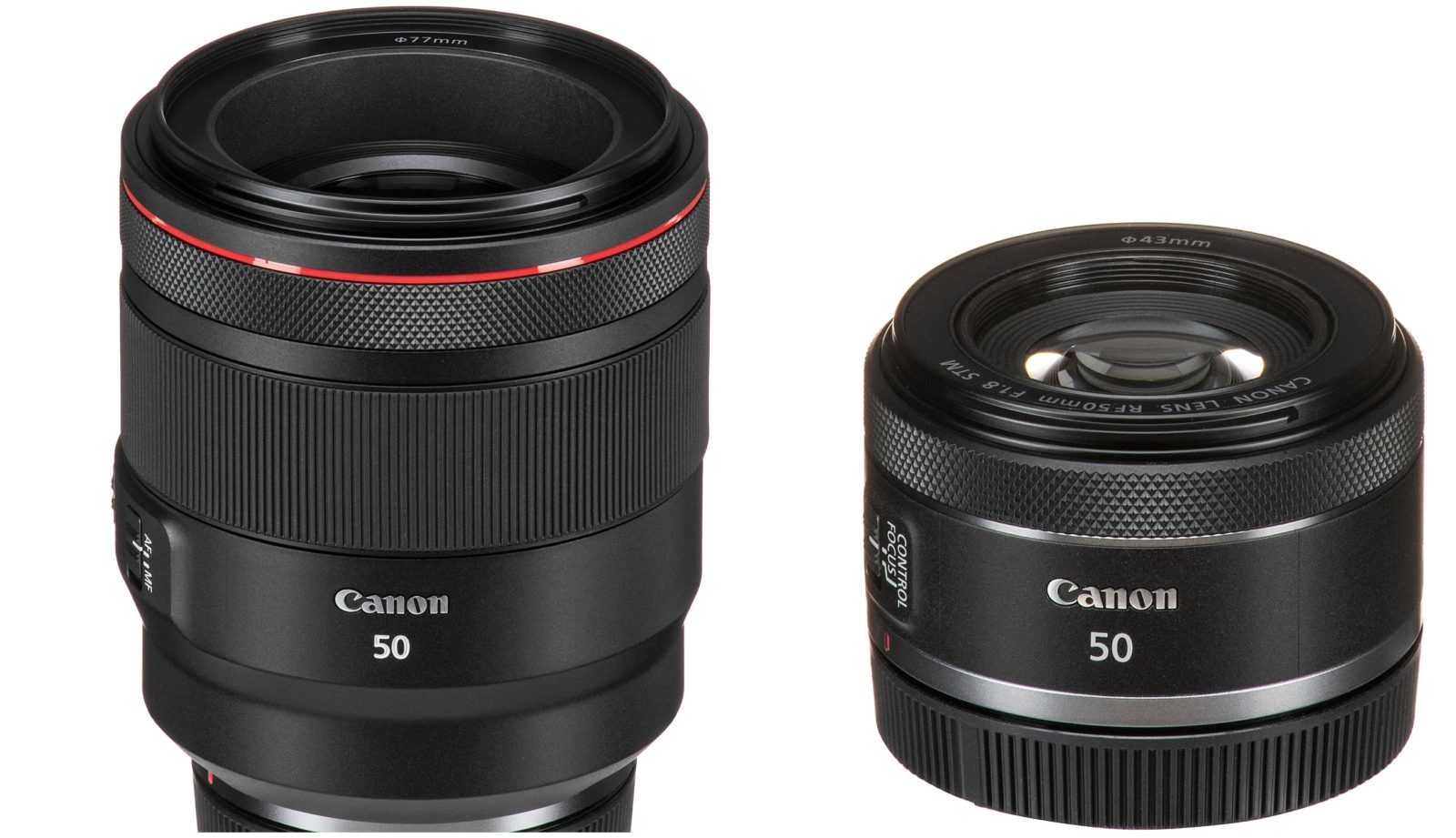
Pro vs Nifty Fifty
The Canon RF 50mm f/1.2 is the dream lens for any photographer but comes at a ridiculous price point. While pros may argue for the best gear, the nifty fifty is a solid choice for those just starting out and still finding their footing.
Remember not all 50mm f/1.8 Lenses are Created Equal
The Nikkor Z 50mm f/1.8 S, for example, is a 50mm f/1.8 lens but stands apart from the typical nifty fifty. It's a professional lens with a higher price tag, showing that not all 50mm lenses are created equalReturn of Investment
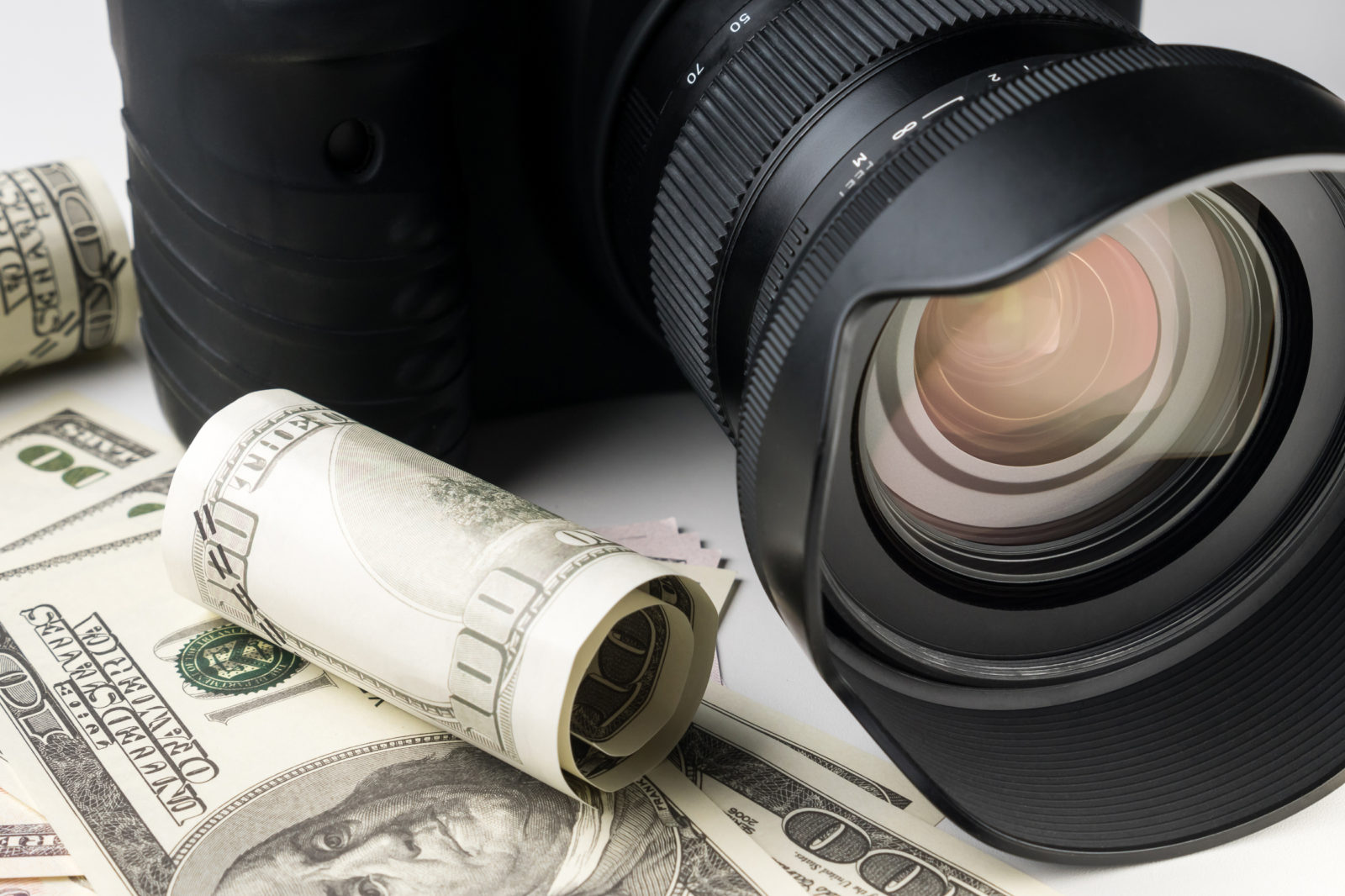
Elevate Your Photography Without Breaking the Bank
Remember, the best camera gear is the one that you have with you and know how to use effec-tively. Starting with a nifty fifty and gradually working your way up to the more exquisite lenses is a practical and financially savvy approach to improving your photography.In my photography courses, I advocate starting with more budget-friendly options like the nifty fifty to maximize your return on investment (ROI). It’s essential to hone your skills and understand your specific needs before diving into the more costly gear. The nifty fifty allows you to explore and develop your photography style without a significant upfront investment. As you grow in your craft and understand your preferences, saving up for a higher-end 50mm lens can be a goal, offering further enhancements to your work’s quality and creative potential.
Looking for a Nifty Fifty?
If you’re in the market for a Nifty Fifty lens, you’re in luck! Below, we’ve compiled a list of 50mm lenses available for various camera brands. Please note that the prices listed are averages and reflect the rates at the time of writing this article. We aim to update this list periodically to include the latest lens models and pricing. For the most current pricing and availability, we recommend checking with your local or online camera dealers. Importantly, when choosing your nifty fifty, consider not just the price but also the compatibility with your camera body, the lens’s build quality, and your specific photography needs.
Brand
DSLR Lens
Price ZAR
(EUR)
Mirrorless Lens
Price ZAR
(EUR)
Nikon
AF-S NIKKOR 50mm f/1.8G
3,495 (170)
Canon
EF 50mm f/1.8 STM
2,495
(122)
RF 50mm f/1.8 STM
3,495
(170)
Fuji
–
–
Fujifilm XF 50mm f/2 R WR Lens (Black)
Sony
DT 50mm f/1.8 SAM
2,995
(146)
FE 50mm f/1.8
4,495
(219)
Olympus
–
–
M.Zuiko Digital ED 25mm f/1.8
6,495
(316)
6,000
(300)
–
Pentax
HD Pentax-DA 50mm f/1.8
3,495
(170)
–
* This table offers an overview of DSLR and mirrorless options from various brands, accommodating different preferences and camera systems. It’s worth noting that for some brands, achieving the nifty fifty experience requires a different focal length due to smaller sensor sizes, for example, leading to the inclusion of the Olympus 25mm (Micro Four Thirds) lens.
The same principle applies to all APS-C cameras, where a 35mm lens equates to a 50mm on a full-frame camera. Without being overly strict or academic, my advice is to get yourself both the 35mm f/1.8 and 50mm f/1.8, regardless of whether you’re using a full-frame or an APS-C camera!
Third-Party 50mm Lenses:
To complement our list of Nifty Fifties, here are some notable third-party 50mm lenses that offer great value and performance. Keep in mind, that third-party lenses can provide an excellent alternative to brand-name options, often at a much more affordable price point.
- Yongnuo YN 50mm f/1.8 II
- Samyang/Rokinon 50mm f/1.8 AS UMC
- Viltrox 50mm f/1.8 Lens
- Meike 50mm f/1.8 AF Lens
Tip: Get a Lens Hood
While Nifty Fifties are known for their affordability and don’t typically come with a lens hood like the more expensive pro 50mm lenses, it’s a smart move to get one. A lens hood can enhance image quality by cutting out flare and adding an extra layer of protection for your lens. Given the sharp images and creative shallow depth of field, a lens hood is a small but mighty addition to the lens, adding to its flexibility! If an official hood seems a bit pricey, there are plenty of third-party options that do the job just as well.
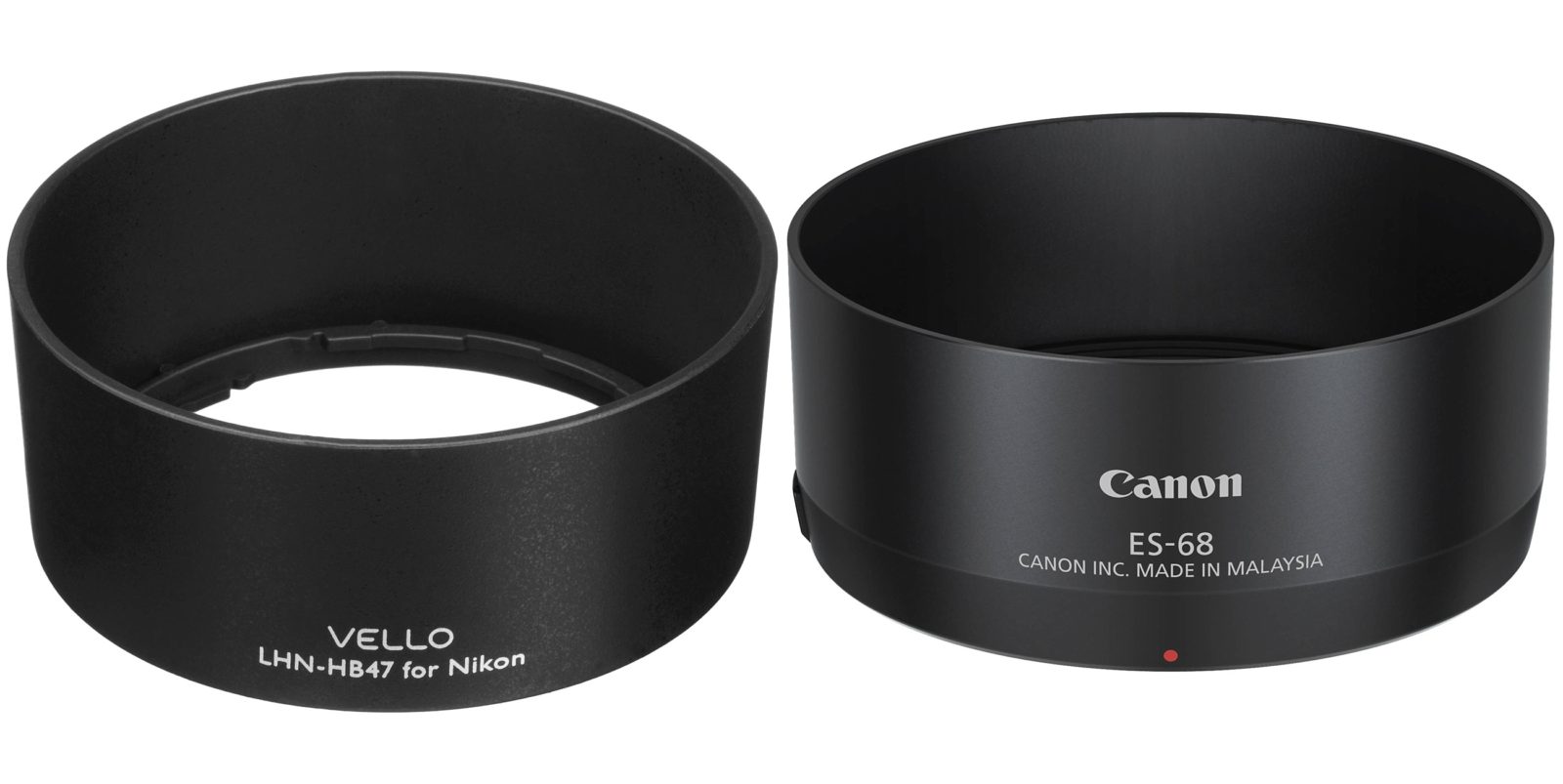
Protect Your Nifty Fifty with a Lens Hood
Choose a branded lens hood or opt for a cost-effective third-party alternative. Just ensure it is compatible and matches your lens's filter thread size.Final Thoughts
Wrapping up, the nifty fifty lens is a solid choice for anyone in photography, from beginners to seasoned shooters. It’s affordable, delivers great image quality, and works well in a variety of settings. This lens pushes you to get creative with your framing and composition, making it a practical tool for enhancing your photography skills.
Share your thoughts and knowledge about nifty fifties with us and we’d also love to see what you can do with your 50mm lens! Share your best 50mm shots by uploading them and tagging #50mm, and #NiftyFifty on your profile or in a relevant community group. It’s a great way for our photography community to exchange ideas and draw inspiration from each other’s work. So grab your camera, capture some amazing photos with your nifty fifty, and show us what you’ve got!

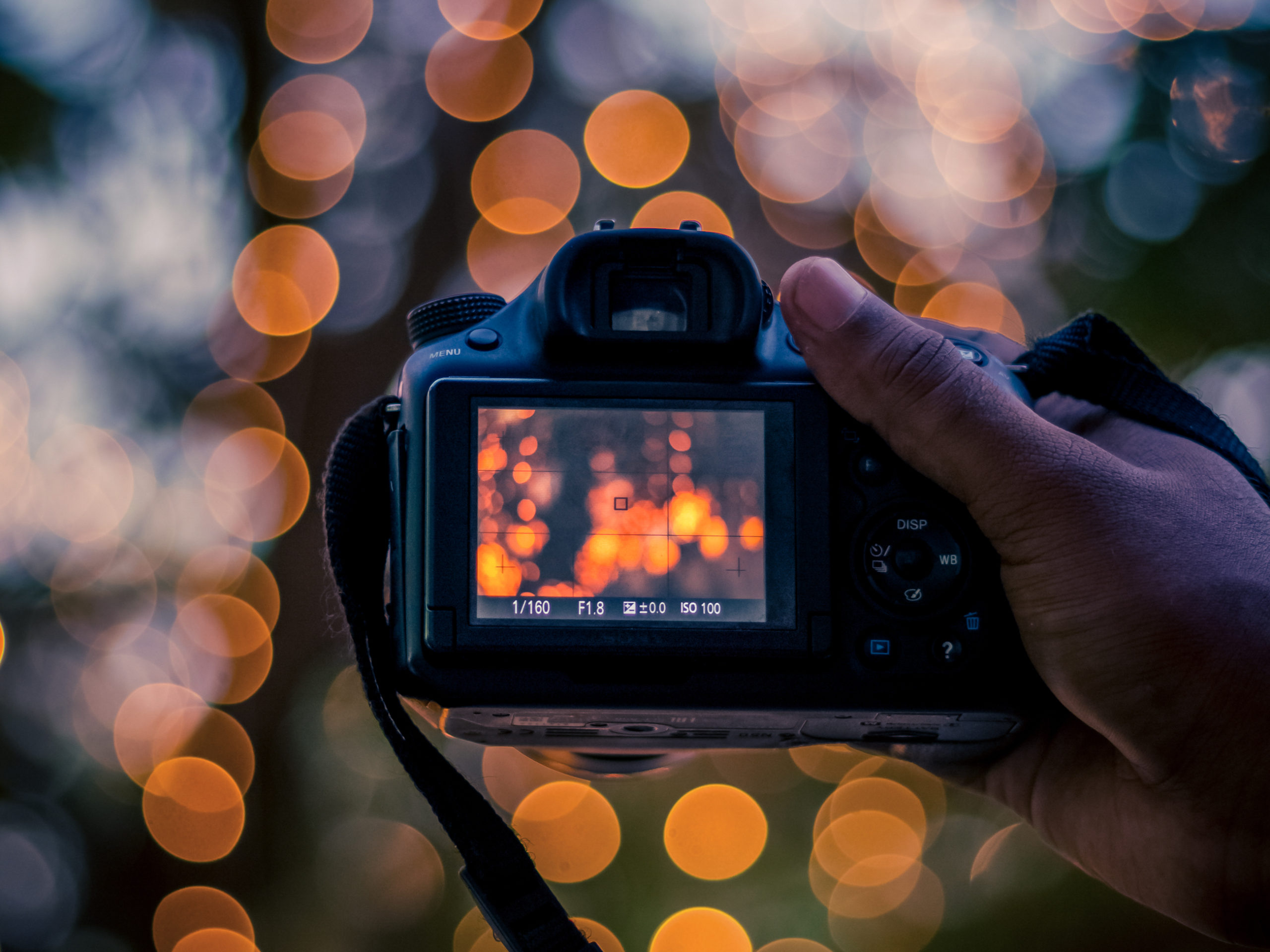
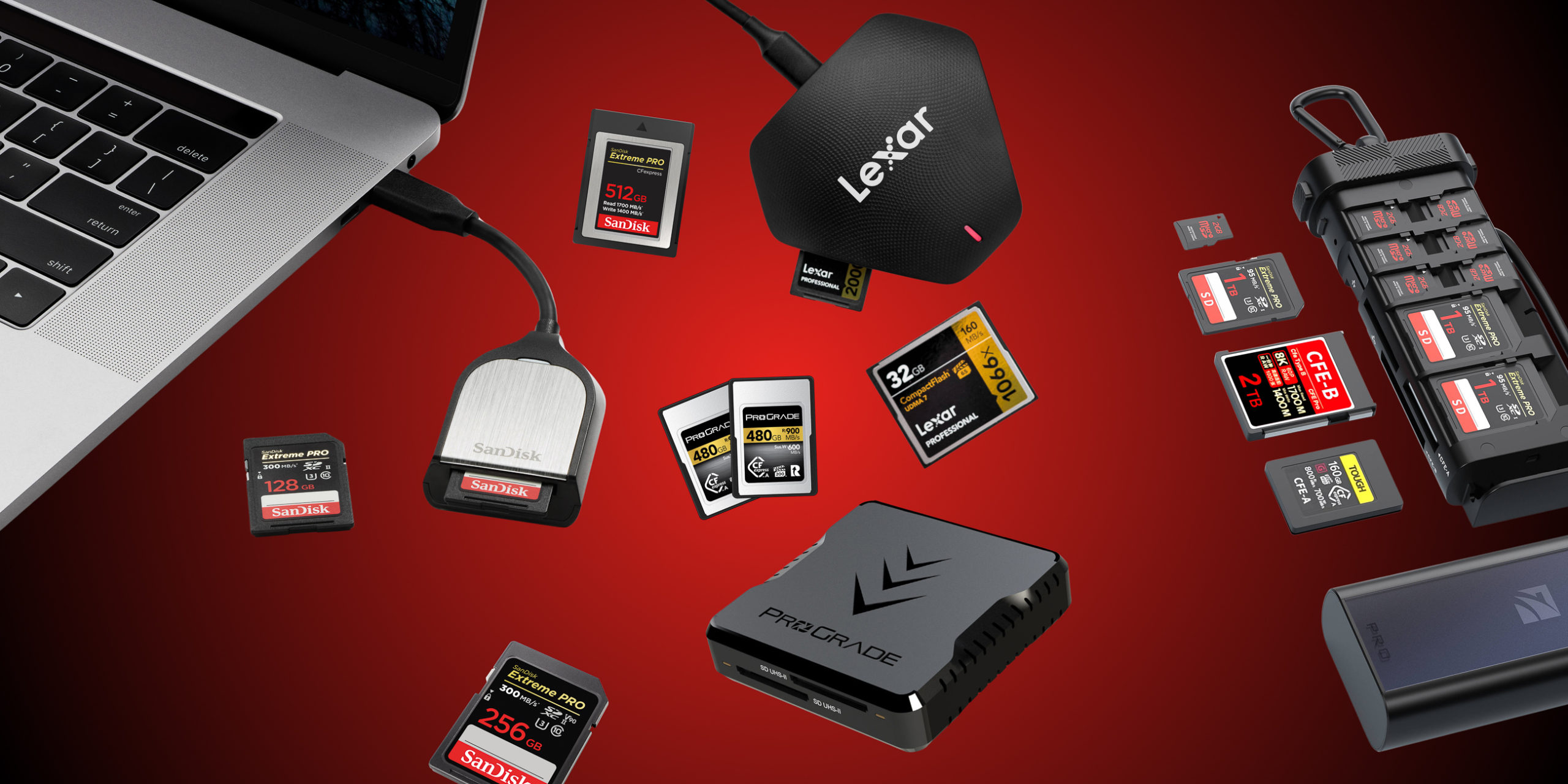

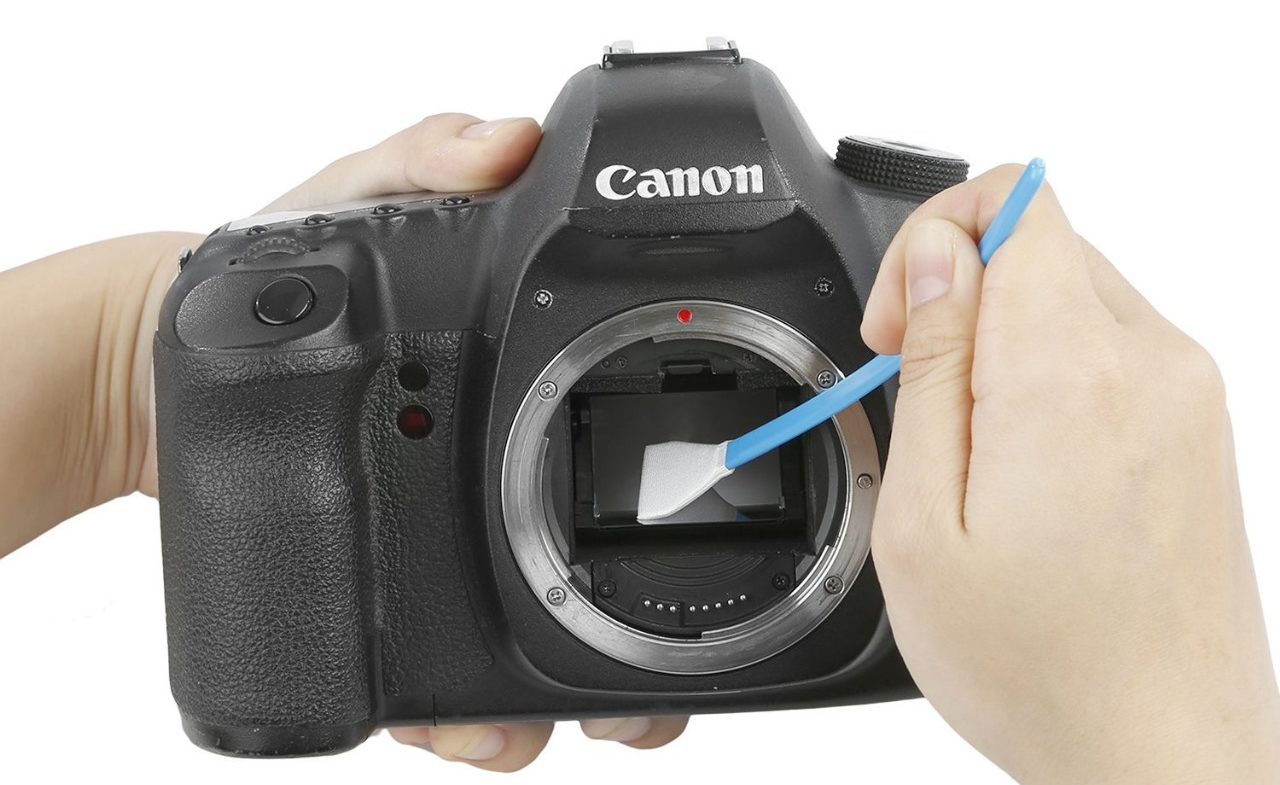

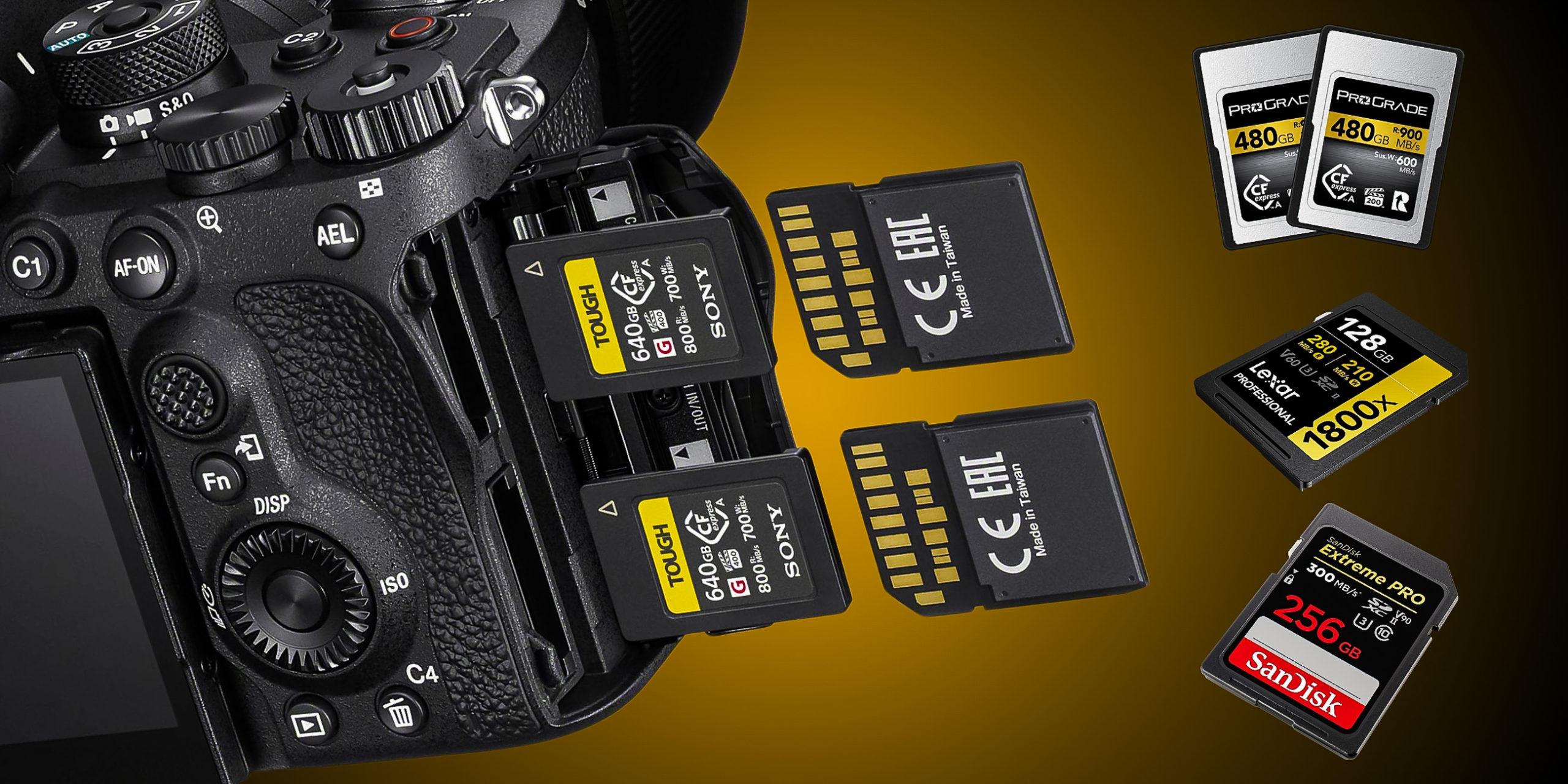

Thanks for this insight full article. I know how much you love working with the nifty-fifty and encourage students not to shy away from it.
Love the article, and refresher on the nifty-fifty, Danie. The Canon EF 50mm was also my first extra lens upon your recommendation, and I haven’t regretted the purchase for one day. Thanks!
awesome article Danie!!! very helpful..thank you.xxx
Thanks Danie. On the back of this article, I decided to get both the 35 and 50mm F2 fuji lenses and used them at an informal evening work function which I volunteered to take photos of. I ended up using both, the 50 in the afternoon and then just stuck with the 35 for the rest of the evening and was pleasantly surprised at how well it turned out, especially in the low light conditions. I still have a lot to learn, but I enjoyed the experience and it open my eyes and mind to the benefits of sticking to a single focal length.
What an informative article. I have just done an informal birthday get together and used my 50mm throughout the evening although i did have a standard kit lens as a backup. I spent the entire day with my 50mm as i was so captivated with its capabilities as I am also still discovering my style. It is a wonderful lens to get you to interact with your (client) to get that perfect shot.
I must admit I am loving the challenges of this lens as I am also discovering how to approach various people with a lot more confidence than my usual shy personality.